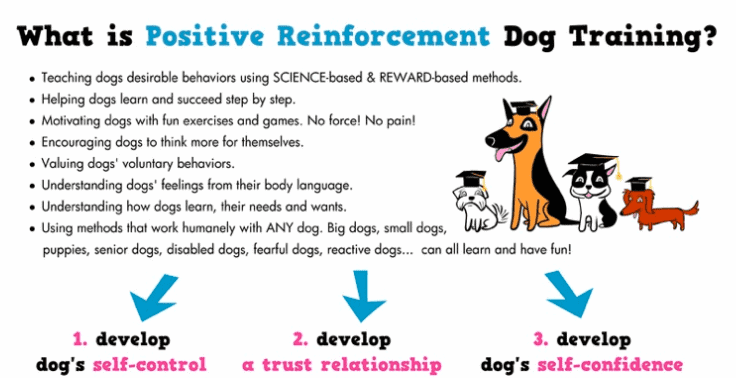Many dog owners have a bad attitude toward shock collars because they don’t want to hurt their dogs. But do shock collars really hurt dogs? My answer is yes because this method has many disadvantages.
Of course, it’s everyone’s personal choice whether to use a shock collar or not. I could go on writing about how it’s good and harmless to sell you a pair, but I will try to write the truth. Next, I will tell you why I think shock collars are a bad option for dog training and what more humane alternatives there are.
Contents
4 negative consequences of using shock collars
The manufacturers of these devices write that their collars are a quick and easy way to wean your dog from unwanted behavior, such as excessive barking or aggression. You just have to press a button; the dog feels a shock and stops behaving that way.
This method can really work. But you should be aware of a few significant disadvantages of shock collars. Because of these disadvantages, most trainers do not recommend using them for dog training.
1. A shock collar can cause physical harm to your dog
Ideally, shock training collars should not be so powerful that they would physically injure the animal. But animals suffer nonetheless. Why? There are several reasons for this:
- Dogs often get used to the shock, and higher and higher levels of performance are required – so dog owners get to the point where they start shocking the dog more and more.
- You may select a level that is too intense and not suitable for a particular dog, and the dog gets hurt as a result.
- The collar or remote control may be defective. There have also been cases where the remote control has been turned on by accident.
Strong electric shocks can cause cardiac fibrillation and even skin burns. But whatever the electric shock is, it will be at least unpleasant for your dog.
“Lack of control over something can in itself be a source of stress. The other thing to remember is the way it works. If it works to stop a behaviour, it must be because the animal found it aversive (if they liked it or didn’t notice it, it wouldn’t reduce the frequency of the behaviour).”
Dr. Zazie Todd, “What is Positive Punishment in Dog Training?“
Reports of injuries caused by shock collars:
2. Such training is notoriously counterproductive
You may be able to get your dog to do what you want or not do something. But it’s all through fear and pain. Such training is notoriously counterproductive. The dog will not like the training, and his relationship with his owner will also deteriorate.
It is not sure that the dog will understand why it feels the pain. Animals sometimes associate the shock with things that are nearby. As a result, they do not change their bad behavior but become afraid of other animals, people or the street in general.
3. The dog may develop new behavioral problems
Constant punishment with electric shocks can cause behavior problems in dogs, such as panic, aggression and chewing on furniture.
Then the dog owners realize that they have harmed their pet and turn to specialists to fix the problem, which takes a lot of time and money.
4. The dog is stressed, which is bad for its health
Stress releases cortisol in the dog’s body, just as it does in humans. Constant stress is bad for health – it contributes to cardiovascular disease, depression, and cancer.
For these reasons, shock collars have been banned in several countries, including Denmark, Sweden, Norway, and Finland.
A year ago, Petco, a major pet products chain, announced that they would no longer sell shock collars because they changed their attitude towards them. We hope that other manufacturers in our country will follow Petco’s example.
Studies on the effects of shock collars on dogs
The harm of shock collars is always debated: Some claim that shock collars are cruel, while others say that’s not true. These are just words, but recent scientific research helps to know the facts.
- This research, which lasted 7 months, involved 14 dogs. As a result, it was determined that electric shocks cause stress in dogs.
- Another study evaluated the results of training 32 dogs with shock collars. These were primarily working and police dogs that were well trained and resistant. However, 25 of the dogs in this group showed all the signs of stress and anxiety – they gave tongue flicks, gave high-pitched yelps, crouched, moved away and squealed.
- The next study found “behavioral evidence that the use of electronic collars negatively affected the well-being of some dogs during training. This effect was observed even when trained by professional trainers using relatively harmless training programs recommended by e-collar advocates”.
You can also check out the other studies on this topic to see if there is a reason for the negative opinion about e-collars:
Dog training methods: Their use, effectiveness and interaction with behaviour and welfare.
The use of electronic collars for training domestic dogs.
Sad report of an owner who used a shock collar
I know some guy who had a shock collar for his dog to correct his “excessive vocalizations.” The dog was initially happy, loving and cheerful. But after using the device, he became anxious, timid and fearful.
Sure, the dog slowed the barking, but at what cost did it? I shared with him the views of experts on the use of a shock collar, and he decided to take the collar off his dog.
But the dog’s psychological state has already deteriorated. This dog, once cheerful, is now overweight, shy, and doesn’t want to play. He seems to act as if he’ll be beaten as soon as someone approaches.
Testing shock collar on human
I found a video where a man from The Good Life team tests a shock collar on himself. Judging by his reaction and the electric shock marks on his leg, it really hurts. And the pain is severe enough even at low levels of exposure.
You can also read an interview where the guys who protested the shock collar describe how they felt. In the end, they conclude that they would never use such devices on their dog.
But some people say that it doesn’t hurt at all. Here’s the answer to that claim from the San Francisco SPCA:
“The skin on a human’s neck is actually thicker (10-15 cells) than the skin on a dog’s neck (3-5 cells). So if you think wearing a prong collar would hurt, imagine how your dog feels.”
Here is another video on this topic:
FAQ
Do vets recommend shock collars?
It’s safe to say that no vet will advise you to use them. In addition, many animal welfare organizations, including the RSPCA, the Dog’s Trust, the Kennel Club and the British Veterinary Association, have criticized the use of electric collars.
What does a shock collar feel like?
At first, it’s an uncomfortable tingling sensation on the lower settings before escalating to a muscle spasm on the highest setting.
Can shock collars kill a dog?
No such cases have been reported at this time.
Shock collar alternatives
Your relationship with your dog should be based on love. My personal experience is that encouragement works much better than punishment.
You can let your dog UNDERSTAND that he will be praised for good behavior and get treats. Sure it’s harder and takes longer, but it’s worth it.
📌 Important research topic: Should I spay my puppy? Pros and cons of spaying for dogs.
Summary
We should not control dogs with pain and fear. They are our friends that we must treat with care. If you agree, share this post on social media so everyone knows the truth about shock collars and comes to the right conclusions!
I also found a page where you can sign a global petition to ban shock collars worldwide. On their website you can find a lot of information about this issue and read articles with real life cases describing how dogs have suffered from shock collars.
- How to make OUTDOOR DIY dog potty area - June 18, 2023
- BEST dog organization ideas to keep your home tidy - June 1, 2023
- 10 Best behaved dog breeds - May 29, 2023



